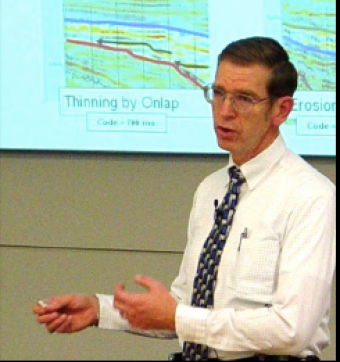Date: July 18, 2017 1h 15min Advanced
Once an asset has been discovered and the decision to develop the field has been made, often there is a reason to get better seismic data, either through reprocessing or reacquisition. For the production phase, we need as much detail on the reservoir as possible. The reservoir is usually composed of numerous compartments – elements that will have independent fluid movements. Each compartment of the field is mapped and the impacts on production evaluated. I would divide the class time into four (4) segments: (1) review Exercise 32, (2) introduce Lecture 33, (3) the Exercise Part A, and (4) Exercise Part B. The review of exercise 32 has eight (8) slides, and will take ten (10) minutes to explain. Lecture 33 has eighteen (18) slides, and takes ~30 minutes to explain. The introduction to exercise Part A has thirteen (13) slides, takes ~15 minutes to explain. The introduction to exercise Part B has seventeen (17) slides, and takes ~20 minutes to explain.
At the end of this lesson, students should be able to:

This course, based on teaching material from Dr. Fred Schroeder (formerly of Exxon/ExxonMobil), reflects on the geology and geophysics basics for the petroleum industry. General geology and basic geophysics are not required, but helpful with the material.
We encourage the reuse and dissemination of the material on this site as long as attribution is retained. To this end the material on this site, unless otherwise noted, is offered under Creative Commons Attribution (CC BY 4.0) license